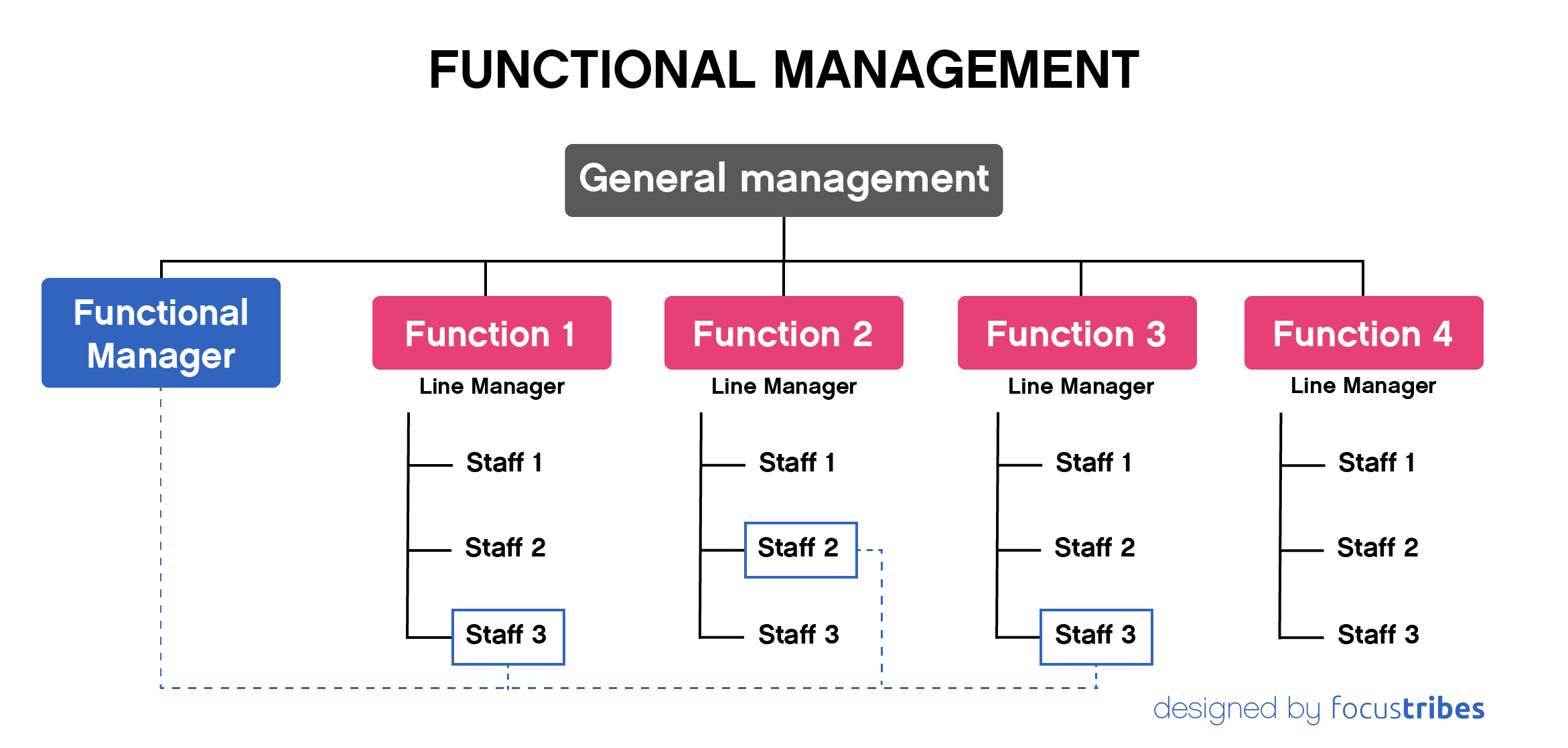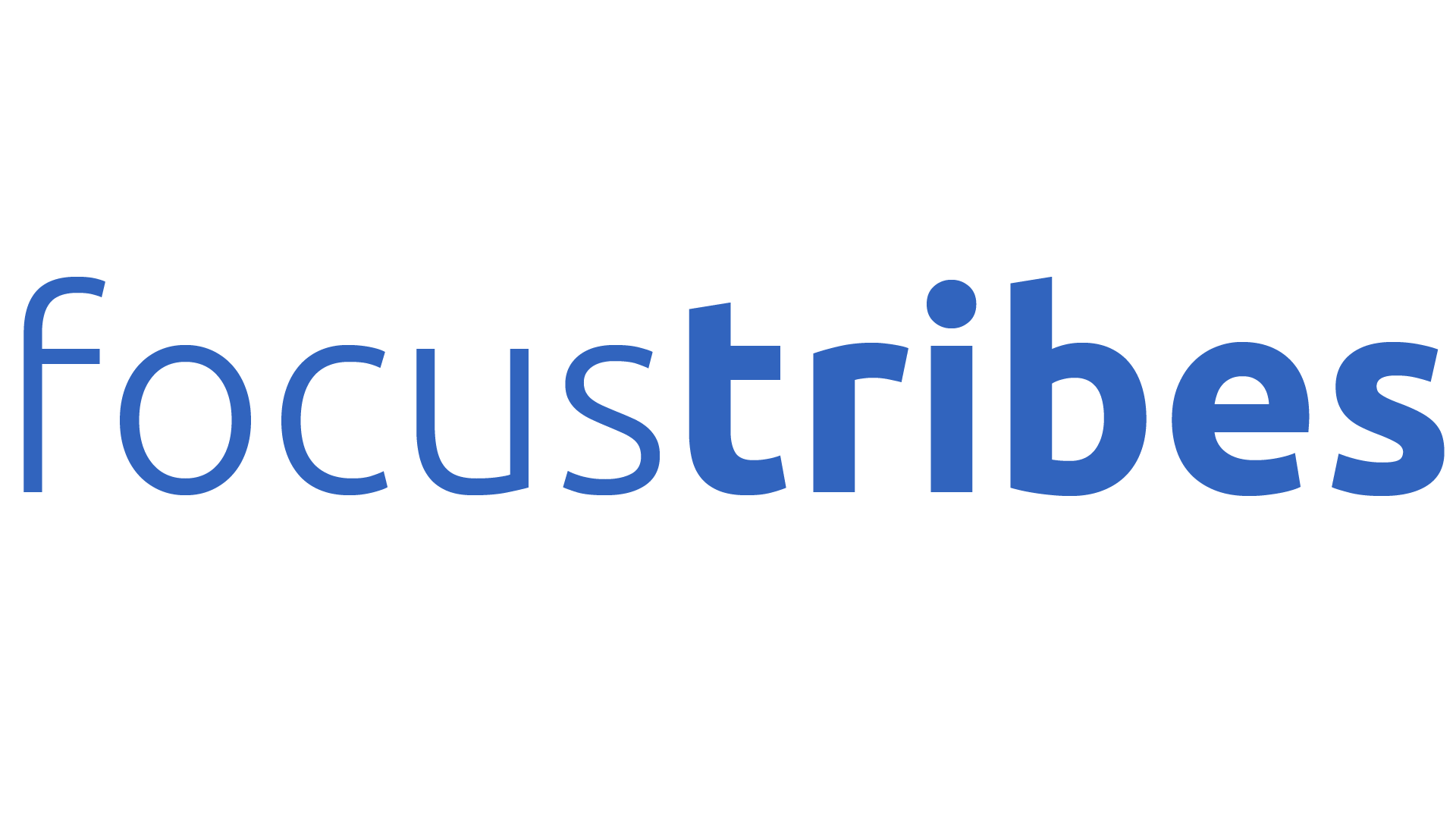In companies, teams are often led by specialist managers, optimising performance and cohesion. When a large-scale project arises, a functional manager, who may be internal or external, steps in to manage it. He or she coordinates the teams, who remain under the supervision of their line manager, while assigning them specific tasks. At FocusTribes, our consultants often play the role of functional manager, guiding our customers towards the success of their projects. Find out more about our management consulting expertise.
What is functional management ?
In most companies, teams are organised by business area (finance, marketing, HR, etc.) and led by managers who are experts in their field. This management model promotes the performance of each department, improves the quality of products or services, and strengthens the overall cohesion of the company. It's as if each team had its own expert leading the group towards common goals. However, when major projects are launched, a functional manager, the project manager, steps in to steer these initiatives.
The functional manager is responsible for managing the project and ensuring its development, while coordinating the teams, which remain under the authority of their line manager. This type of collaboration allows employees to contribute to the success of the project while maintaining their position in their original department. At FocusTribes, many consultants take on the role of Functional Manager to support our clients in the implementation of their projects.

The 5 major advantages of functional management
1. Skills specialisation
Functional management makes it possible to draw on the specialist skills of each business line, optimising expertise and the quality of work on specific projects.
2. Better project coordination
With a functional manager at the head of the project, coordination between the various business lines is facilitated, reducing silos and ensuring better communication and alignment with the project's objectives.
3. Flexibility and adaptability
This management model enables companies to adapt quickly to changing project needs by mobilising resources from different teams without moving them from their original hierarchical structure.
4. Increased responsibility
The functional manager plays a central role by assigning precise tasks to team members, which clarifies responsibilities and increases employee commitment to the success of the project.
5. Optimising resources
By allowing teams to remain under the direction of their line manager while collaborating with the functional manager, the company maximises the use of its human resources without disrupting day-to-day operations.
The 5 major disadvantages of functional management
1. Authority conflicts
Dual management (line and functional) can create conflicts of authority and ambiguity over priorities, especially if the directives of line and functional managers diverge. A problem of legitimacy may arise.
2. Communication complexity
The need for coordination between several managers can complicate communication, leading to misunderstandings and poor information flow within teams.
3. Increased workload
Employees can find themselves overloaded by having to juggle their usual tasks with those assigned by the functional manager, which can be detrimental to their overall performance and lead to stress.
4. Risk of diluting responsibilities
With several managers involved, it can be difficult to determine who is responsible for which results, which can lead to a dilution of responsibilities and a lack of clear accountability.
5. Resistance to change
Teams may show a certain resistance to being led by a functional manager outside their usual hierarchy, which can affect employee motivation and commitment to the project.

Concrete examples of functional management
Implementation and deployment of SAP projects :
International SAP implementation and deployment projects are good examples of organisations subject to functional management. At Focustribes, we regularly position Programme Directors or Project Managers in these functional management roles. The consultant is responsible for coordinating the business teams within the framework of the programme. Employees in the various divisions will continue to report to their line managers, but will be partially or totally relieved of their day-to-day responsibilities. On the other hand, they will be assigned specific responsibilities to bring the project to a successful conclusion.
BRM's role in the international agri-food sector :
In another example, at one of our customers in the food industry, the position of Business Relationship Manager Finance reports hierarchically to the Finance Director for France, as he lives and works at the French head office. His role is to act as a bridge between the local Finance team and the Group IT team, which is scattered all over the world, as part of a project to roll out new IT tools. His functional manager is therefore the Group IT Director, as he works on this major project on a daily basis, but his line manager is local.
10 tips for applying functional management in your company
The role of functional manager is suitable for people who have achieved a high level of leadership and team coaching, particularly on major projects.
Needs analysis :
Start by identifying the areas where specialist expertise is essential. An in-depth analysis will enable you to target the projects that will benefit most from functional management.Clear definition of roles
Clarify the roles and responsibilities of each functional manager. To lead their projects to success, they will need to have real sponsors at senior management level and the support of line management, who will need to make sufficient internal resources available.
Effective communication processes
Set up clear and effective communication channels to ensure smooth coordination between the various functions. Use collaboration tools to facilitate the exchange of information.SMART objectives: Define clear, measurable objectives for each function. SMART objectives (specific, measurable, achievable, realistic and time-bound) will help managers understand what is expected of them.
Promote collaboration: Encourage interaction between departments. Hold regular meetings to discuss ongoing projects and identify opportunities for fruitful collaboration.
Performance indicators: Set up key performance indicators (KPIs) to monitor progress and evaluate the performance of each function. This will enable you to quickly identify areas requiring adjustment.
Flexibility and Adaptability: Remain flexible and ready to adjust roles and processes according to feedback and project developments. Continuous improvement is crucial to the success of functional management.
Communicate the benefits: Keep management regularly informed about the progress of the project and the advantages of having dedicated cross-functional business teams. Show how this functional management approach improves the company's efficiency, quality and competitiveness.
Encouraging Innovation: Give functional managers the freedom to innovate and experiment with new ideas. Create an environment conducive to innovation to stimulate significant improvements and rapid adaptation to market changes.

